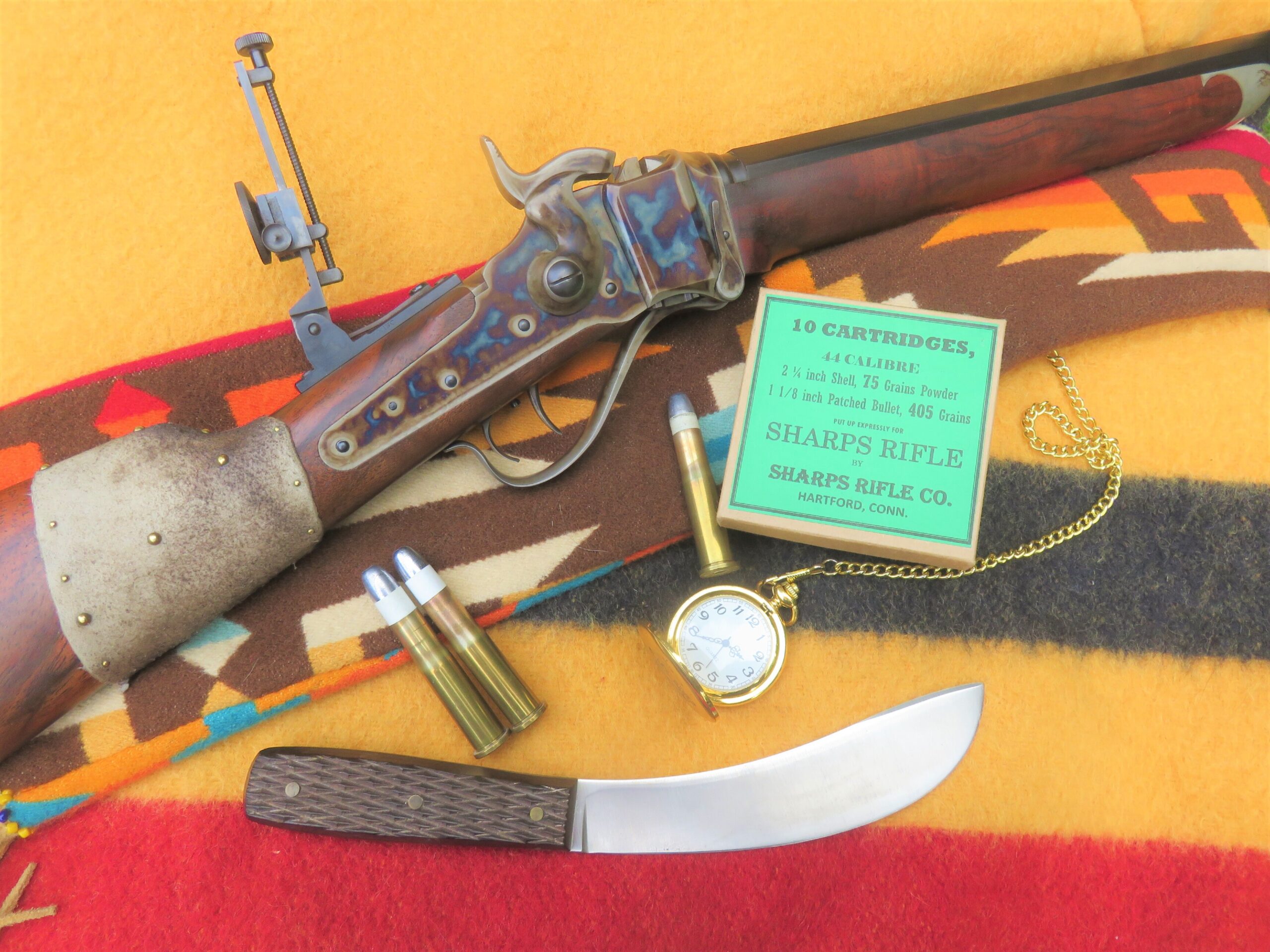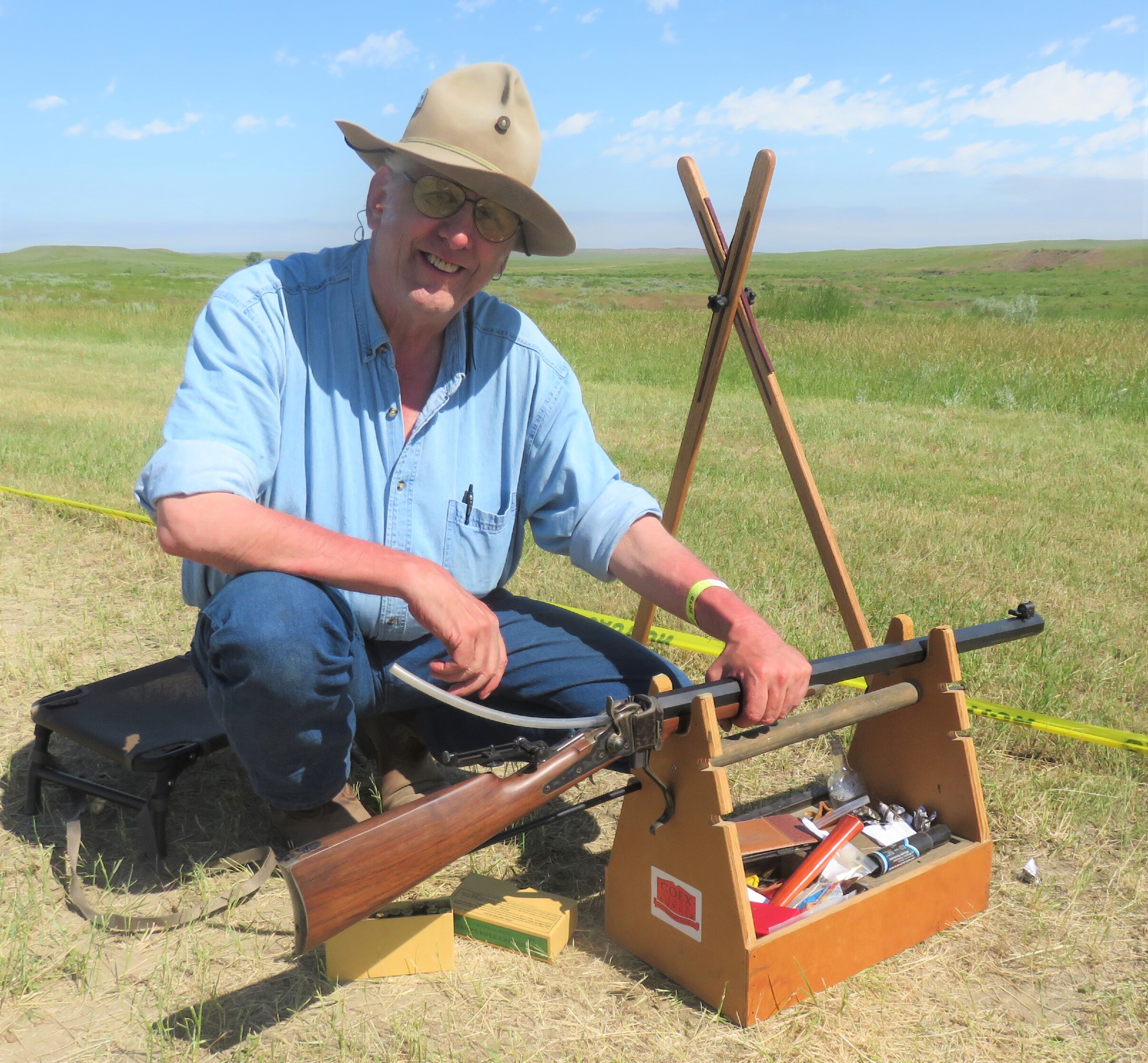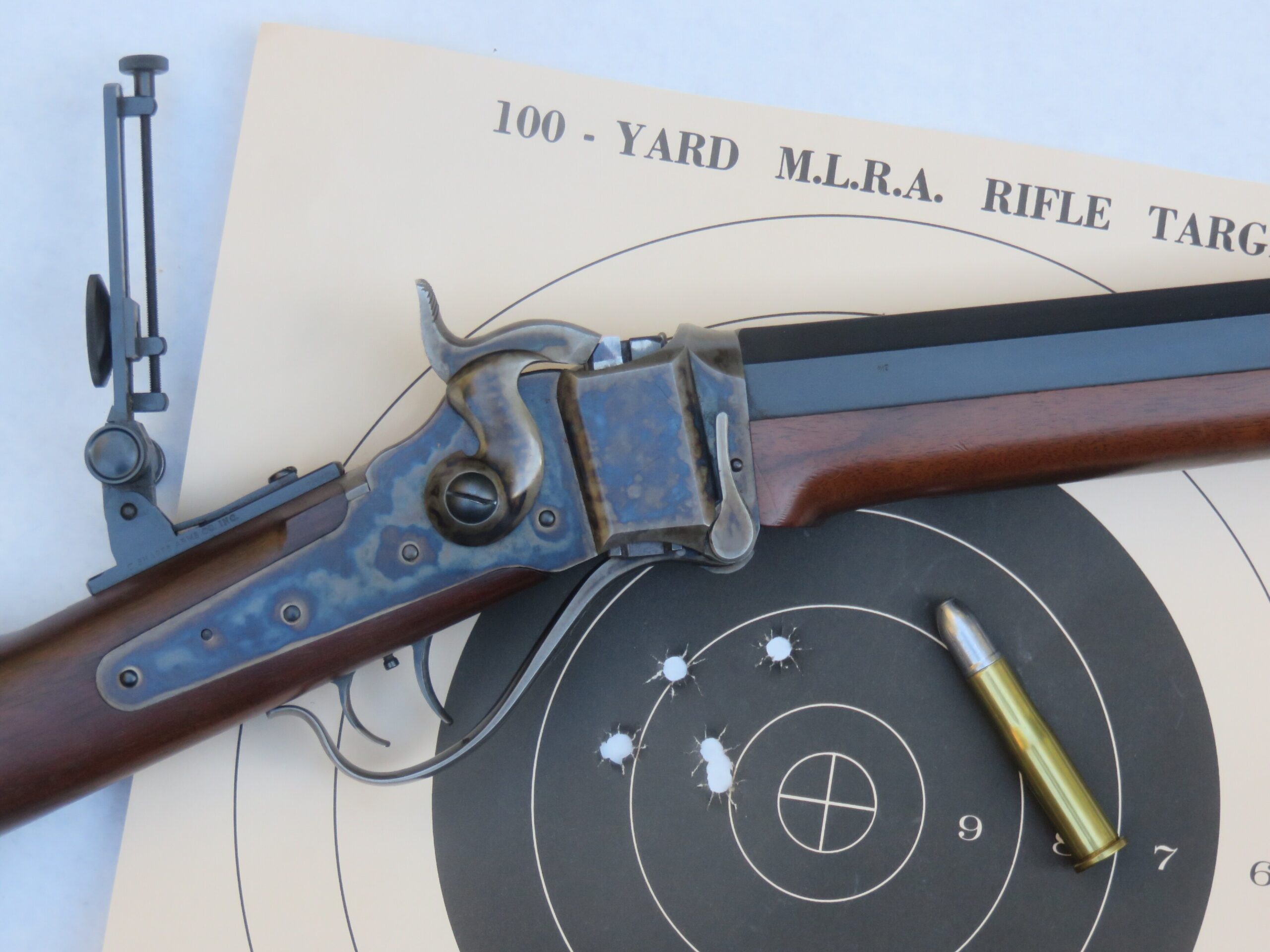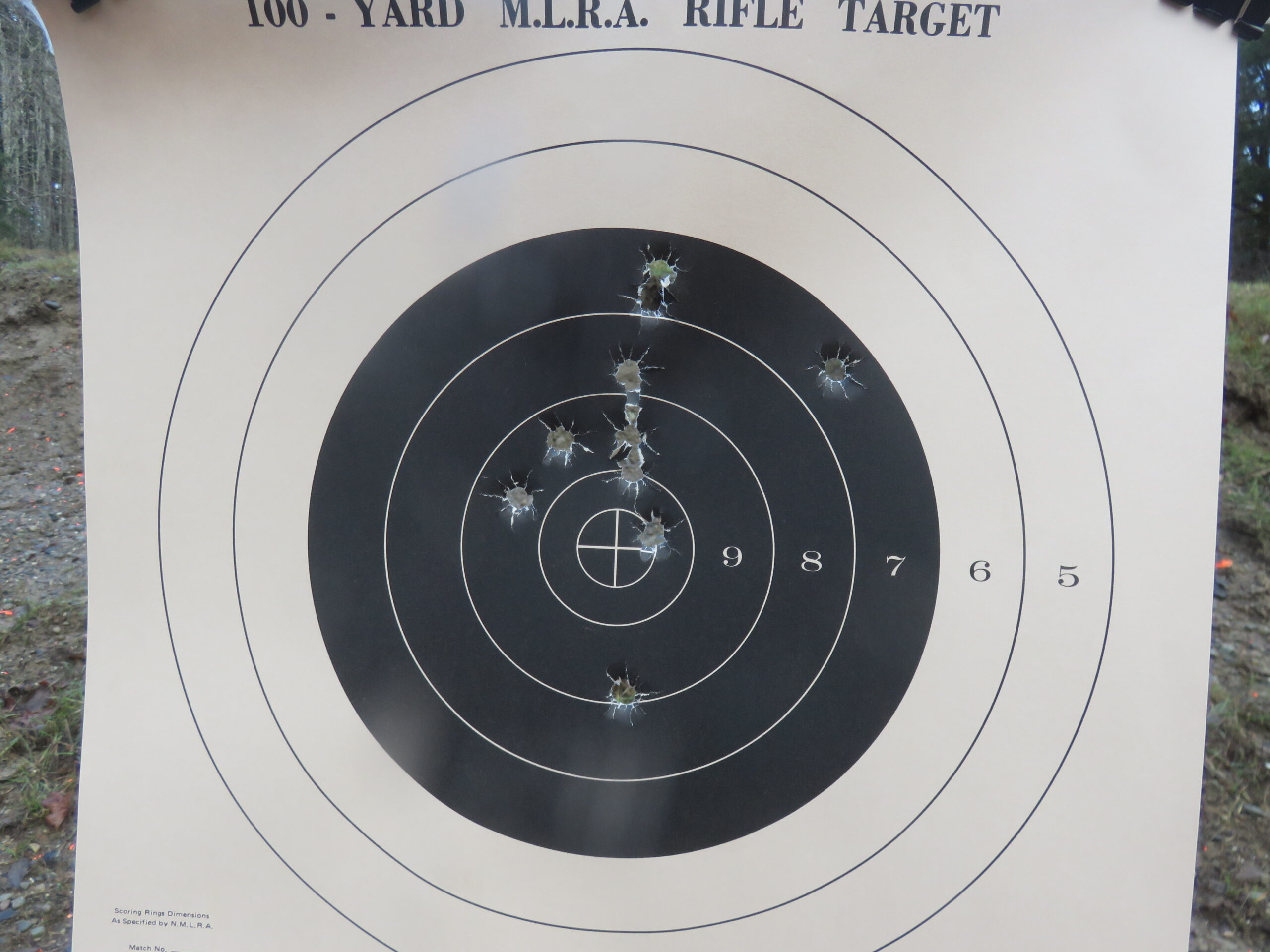
By Mike Nesbitt | Contributing Editor
Sometimes the more advanced you get in black powder cartridge reloading, the more trouble or problems you seem to find.
That’s the way I felt about my .44-77 loads, which were intended for and fired in “Hefty Hannah,” my 15-plus pound Sharps by C. Sharps Arms. The loads I had been using fired 480-grain bullets, powered by 75 grains of Swiss 1½ Fg powder, which were loaded for mid- to long-range and I had no complaints about them. However, when I wanted to fall back, in terms of power, and work up a good short-range load, it was really like starting all over again.
Before going a whole lot further, let me explain that a short-range load is for use mainly from 100 to 300 yards, mid-range is 300 to 600 yards and long-range is 700 to 1200 yards. That had to be said, again, just to set the stage for what kind of shooting might be done. And I wanted a good short-range loading to be able to enjoy the shooting with low recoil, even with the 15-plus pound rifle, for use in our short-range (100 and 200 yards) matches. Those matches include our annual Buffalo Camp where hanging silhouette targets are used, similar to the targets used in the mid- and long-range Matthew Quigley Buffalo Rifle Match held each year in Montana.

Of course, my long-range load could certainly be used at shorter ranges. Actually, the load with the 480-grain bullets, cast from an Accurate Molds’ #44-470N bullet mold, had been used with some success. The fact that such a load is more than needed for short-range shooting combined with the comfort level of shooting less-recoiling loads made me look for something a bit reduced in both kick and blast. “Hefty Hannah” is a comfortable rifle to shoot, don’t get me wrong, and while the recoil of this heavy rifle with the long-range loads was not really painful, it was on the tiring side. In addition, I feel that shooting lower-recoiling loads allows for more concentration on the sights and the target, which are clear advantages for better shooting.
Finding a good lighter load should have been easy. Actually, it would have been very easy and simple, if I had tried the right load first. As it was, more time than you might expect was invested in finding that load and that requires some details in explanation.

When I first began shooting a rifle chambered for the .44-77, everything was new to me. My experiences with other calibers gave me a fairly good background but that was just in the basics, more or less just how to use the tools. Loads were tried with only a few different bullets because I had to buy the molds rather than buying bullets ready-made. Finding bullets for the .44 caliber Sharps rifles, using slugs with an uncommon diameter of .446”, is not the easiest task. Buffalo Arms Company offers them but only a long-range style with a weight of 520 grains. What I wanted, even to begin with, was a bullet to duplicate the earlier .44-77 loadings with 405-grain bullets, or similar.
That was for shooting with my first .44-77 rifle, a very lovely gun, by C. Sharps Arms, what they called their Model 1874 Semi Custom Classic Hartford Sporting Rifle with a 28-inch #1 heavy barrel featuring the Hartford collar. Rifles of this style are no longer offered by C. Sharps Arms but a similar rifle could be ordered by simply selecting the wanted options on their Hartford version of the 1874 rifle. One option I don’t see in their listing is the crescent butt plate but if that was desired, ask for it and they might have one.

This rifle has been used a lot, a whole lot, and the stock was repaired twice, complete with the rawhide wrap around the wrist of the stock. That rawhide wrapping around the break in the stock, as far as I’m concerned, simply gives the rifle a more complete “old-time look.”
It still goes shooting too, even if it’s just for a couple of shots before my attention must be turned to something else. And while I have shot the gun on several outings, I do not have a load that I find worthy of settling on as yet. Therefore, I don’t have any real good loads to actually brag about but I must tell you about one of them.
The only real competition that rifle has is my other .44-77, the 15-plus pound rifle I call Hefty Hannah which has already been introduced. And it is Hefty Hannah that I want the target load for with a 400-grain grease groove bullet. That should not be a big order but for a reason or reasons that I can’t explain, some of the loads I used just a few years ago no longer satisfy me with their performance. This simply means getting a good load is almost like starting over again.

But there are differences, which must be explained. Remember, I did say that any difference can make a difference and here’s another example. The load I liked and enjoyed with my first .44-77 used a 400-grain bullet cast from Accurate Molds’ 44-400B and that was fired over 75 grains of Olde Eynsford 2F powder. Out of the 28-inch barrel of my first or light .44-77 that bullet left the barrel with an average velocity of 1358 feet per second, a respectable speed for the black powder cartridge. Further tweaking of the load in that rifle favored 72 grains of the same powder and that’s what I settled on for my standard loading.
Years later, after Hefty Hannah was built for me by C. Sharps Arms, I strayed away from that “standard loading” with the idea of doing more shooting at longer ranges, specifically at the Matthew Quigley Buffalo Rifle Match where shots are taken from 350 to 805 yards. The bullet weight was increased to 480 grains and the powder was increased too, back to 75 grains, but switched to some of the old GOEX Cartridge powder.
GOEX’s “Cartridge” powder, that was its proper name, has not been offered by GOEX since about 1999 (a rather rough guess on my part) and I hesitated mentioning it just because it is no longer available. I have just a couple of pounds of it left and it does perform very well, so I’ll use it until my stash is depleted. When it is gone, I’ll quickly switch to Swiss 1½ Fg which is very similar. Then more tweaking might be needed.

For starters, I began using the 400-grain bullets again but over 70 grains of Cartridge. At first that seemed to work rather well but as more shooting was done, performance, mainly in group size, grew poorer. Why that happened, or happens, I don’t understand and I admit it. But to continue with the tweaking, the powder charge was raised just back to 72 grains and my happiness returned.
A target is shown with my “group” using that load, doing the shooting with Hefty Hannah but the target must be explained. Ten shots are shown, all in the black but all over the black. The first five shots were taken and those grouped in the 9 and 8 rings, at about 12 o’clock with a couple of the shots landing in the 7 ring too. Then the rifle was set in the rack behind the firing line while I shot at another target with another rifle, a .40-70 Sharps bottleneck. After finishing with the .40-70 (which you will probably be hearing about) I grabbed Hefty Hannah again and lowered the rear sight by about 1 ½ minutes, which should drop the group by about 1 ½ inches at 100 yards. That prepared the gun for another five shots.
And that was the only preparation the rifle was given, other than using a blow tube to “breath” down the barrel. Blowing into the barrel softens the black powder fouling in the bore with moisture from your breath. I might have done better by wiping the barrel with a moist patch but that wasn’t done. The next five shots performed very well, in my opinion. Yes, they might have grouped tighter if I had wiped the barrel but they still hit quite nicely in the 9 and 10 rings of the target, even giving me one X. It looks like that’s the load I’ll use in the next Old West Centerfires match with Hefty Hannah. If things go as well as I’m hoping, I might even report on that match, that is if I have something to brag about…



